Nature 2. Natural Sciences
I. Introduction
1. Plant nutrition
2. Animal nutrition
3. Plant reproduction
4. Animal reproduction
5. Interaction, adaptation and coordination in animals and plants
6. The natural environment. Ecosystems
7. Energy inside the Earth
G. Glossary
8. Matter and its properties
9. Motion and forces
10. Obtaining and using energy
11. Heat and temperature
12. Waves. Light and sound
G. Glossary
Este libro contiene:
-
15 secuencias
-
620 recursos
-
Idioma:
- Inglés
Libro de texto
-
1. Introduction
- Ir a ficha de secuencia
- 0 secuencias
- 2 recursos
1. From biomolecules to organisms The molecules that make up living things, biomolecules, join together to form large molecules called macromolecules. The next level of complexity is the cell, which is the basic building block of living things and the simplest form of life. Similar cells group together to form tissues, and these in turn make up organs. [...]
-
2. Plant nutrition
- Ir a ficha de secuencia
- 0 secuencias
- 50 recursos
All living things need to carry out their vital functions. To do this, they need food and energy. Unlike animals, plants make their own food. They need very simple substances like water and mineral salts that they get from the soil, and carbon dioxide that they get from the air. Plants need energy to make food. They get the energy from the Sun. Plants are indispensable for life on Earth. [...]
-
3. Animal nutrition
- Ir a ficha de secuencia
- 0 secuencias
- 23 recursos
Animals are heterotrophic organisms; they cannot make the organic material they need to eat. They can get organic material from other animals and from plants. Plants are the only living things that can produce organic material. They do this through photosynthesis. Nutrients are transported to all the cells in the body, along with oxygen for respiration. Waste is produced during cellular activity. Animals also need a system to remove this waste.
-
4. Plant reproduction
- Ir a ficha de secuencia
- 0 secuencias
- 30 recursos
Living things can reproduce. They use one or several of their cells to make organisms similar to themselves. There are two types of reproduction in plants and animals: asexual reproduction and sexual reproduction. In plants that are more highly evolved, certain parts of the plant are involved in reproduction. These include flowers, pollen, fruits and other plant organs, like the pistil or the stamens. The reproductive cells form in the flowers.
-
5. Animal reproduction
- Ir a ficha de secuencia
- 0 secuencias
- 35 recursos
Reproduction is the only vital function that is not needed to keep an individual alive. It ensures the continuation of the species. Although sexual reproduction is a universal characteristic of animals, many species of invertebrates can also reproduce asexually. Asexual reproduction is very efficient: specialised cells are not needed and organisms do not need to look for a partner. [...]
-
6. Interaction, adaptation and coordination in animals and plants
- Ir a ficha de secuencia
- 0 secuencias
- 44 recursos
The functions of interaction coordinate an organism's vital functions. They help individuals interact with and adapt to their environment. Living things constantly receive a large amount of information through their sense organs. Animals behave in certain ways to survive in their environment. Their nervous and endocrine systems create action responses that are transmitted to the organs. [...]
-
7. The natural environment. Ecosystems
- Ir a ficha de secuencia
- 0 secuencias
- 58 recursos
Most of the energy used by living things originally comes from sunlight which is trapped by autotrophs (or producers). This energy is then transferred from the producers to all other living things through their food. This transfer of energy is possible thanks to the feeding relationships which exist between living things. Living things have other relationships too. [...]
-
8. Energy inside the Earth
- Ir a ficha de secuencia
- 0 secuencias
- 78 recursos
The inside of the Earth is extremely hot and material that rises up from it is responsible for many of the geological phenomena seen on the surface. The Earth's energy is evident when volcanoes produce red-hot lava, or when earthquakes move enormous blocks of rock or cause big cracks in the ground. The Earth's surface is broken up into blocks, called plates, which move over the Earth's mantle. [...]
-
9. Glossary
- Ir a ficha de secuencia
- 0 secuencias
- 7 recursos
Absorb (v): to take in a substance or energy from the surrounding area. amino acids (n): biomolecules which combine to form proteins. autotroph (n): a living thing which produces its own food. Plants are autotrophs. capillarity (n): the force which makes a liquid rise up a thin tube against the force of gravity. carbon dioxide (CO2) (n): the gas produced when living things breathe out; it is used by plants in photosynthesis. [...]
-
10. Matter and its properties
- Ir a ficha de secuencia
- 0 secuencias
- 59 recursos
All the objects you can see around you are made up of matter. However, they are made up of different types of matter. These are called substances. Objects, which are made up of matter, can be physically transformed: we can move an object or change its shape, but it is still made up of the same substances. Matter can also undergo chemical change: the original substances are changed into different ones. [...]
-
11. Motion and forces
- Ir a ficha de secuencia
- 0 secuencias
- 56 recursos
In the world around us, we can see many objects in motion: cars, bicycles, planes, even ourselves. The planets in the Solar System are also in constant motion around the Sun. All motion can be described in terms of its origin, the final position of the motion, the velocity at which it happens and the path travelled, the trajectory. Motion and variations in motion are all produced by the action of forces on objects. [...]
-
12. Obtaining and using energy
- Ir a ficha de secuencia
- 0 secuencias
- 55 recursos
Energy drives the Universe and is part of all the changes which take place on Earth. The Sun is our main source of energy. Without it, there would be no life and most other sources of energy would not exist. Modern societies are totally dependent on electricity and hydrocarbon-based fuels. The disadvantage of depending on energy is that most sources of energy cause pollution and are running out. [...]
-
13. Heat and temperature
- Ir a ficha de secuencia
- 0 secuencias
- 46 recursos
Heat or thermal energy is the energy that a body transfers to a colder body at a certain temperature. Thermal energy is involved in many processes in our daily life, like cooking food, making a hot drink, showering with hot water and heating our home with radiators. For all of these processes we need heat sources, like a gas burner, a wood fire or a radiator.
-
14. Waves. Light and sound
- Ir a ficha de secuencia
- 0 secuencias
- 72 recursos
Perhaps you have seen one of the latest 3D films at the cinema with spectacular light and sound effects. But have you ever wondered what light is? Which mechanisms do we use to see objects and colours? And do you know what sound is? Why are there high-pitched and low-pitched sounds? Why do we sometimes hear the echo of our voice? What is noise? People in the past asked the same questions, but we now know that light and sound are waves.
-
15. Glossary
- Ir a ficha de secuencia
- 0 secuencias
- 5 recursos
Binary compound (n): a chemical compound which is made up of two elements. bind (v, past and past participle bound): to stick together or cause to stick together, for example through chemical bonding. chemical change (n): the process in which the nature of a substance is transformed because of a chemical reaction. chemical formula (n): the group of letters and numbers which show the composition of a chemical compound, for example CO2. [...]
Cursos y asignaturas
-
13 años:
- Biología
- Geologia
-
14 años:
- Biología
- Geologia
-
Aún no hay comentarios, ¡comparte tu opinión! Inicia sesión o Únete a Tiching para poder comentar
La licencia digital es una autorización que permite utilizar un recurso digital de acuerdo con las condiciones legales de dicho recurso. El código que recibas una vez la hayas comprado te permitirá acceder al recurso educativo digital elegido.
Puedes consultar más información en nuestra página de ayuda.

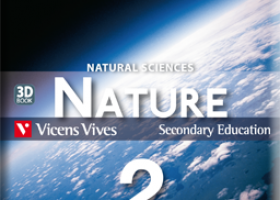
















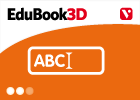
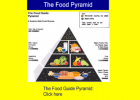
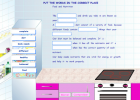
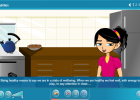
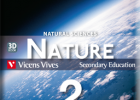


¿Dónde quieres compartirlo?
¿Quieres copiar el enlace?